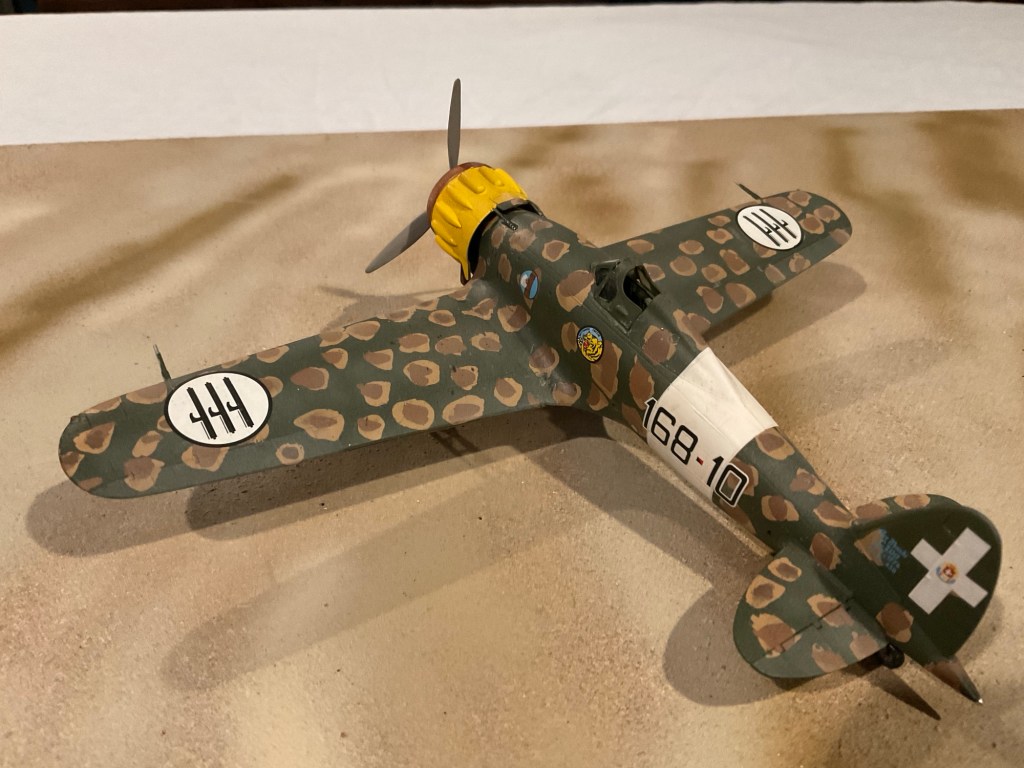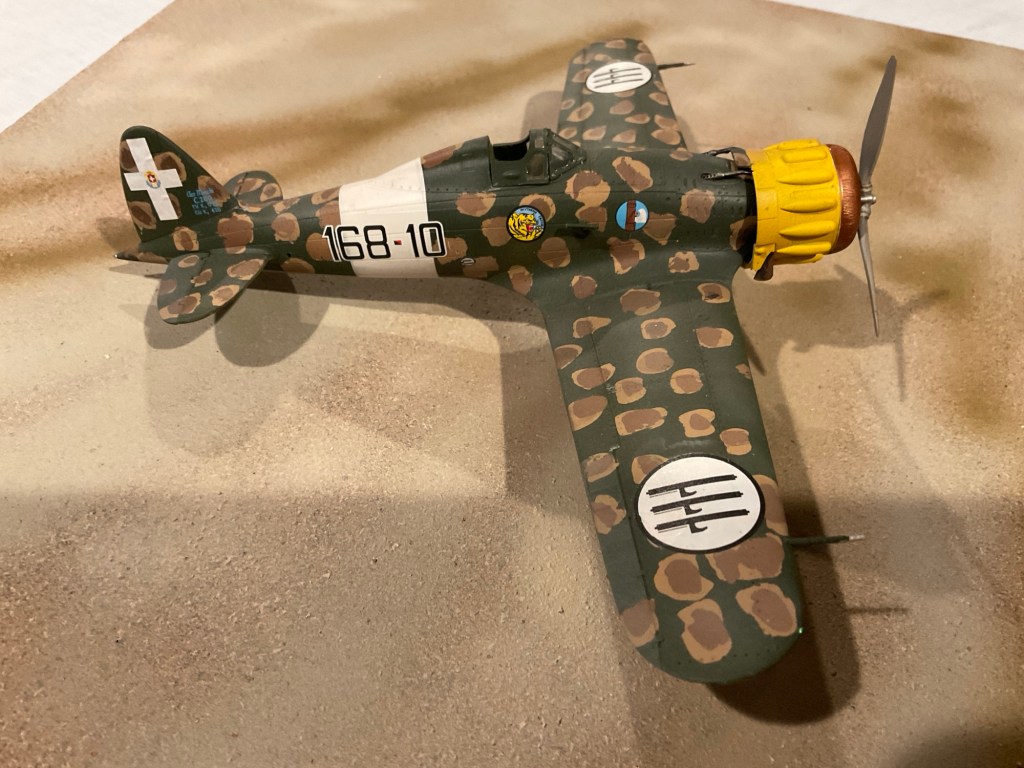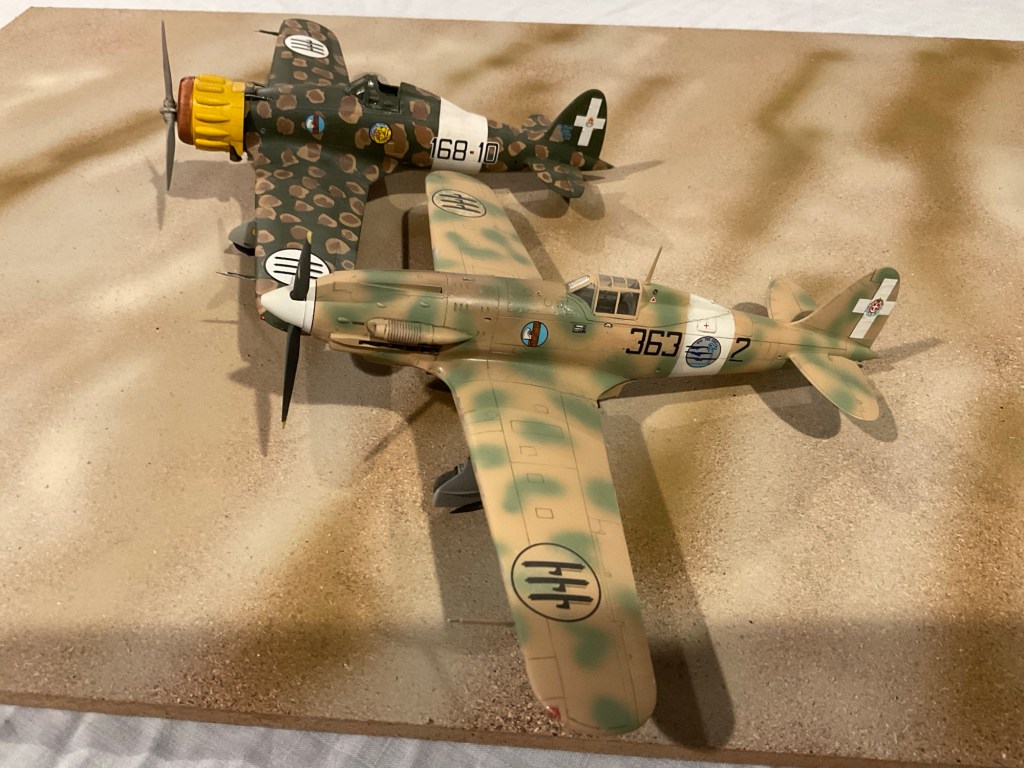Just entering use from the start of the War, the MC.200 was Italy’s most modern fighter at the time.

Let’s take a look at another first generation monoplane.
Design work on the first Italian monoplane fighter, the MC.200, started in 1935. Just slightly after the Hurricane, Spitfire and Bf 109. That makes it clearly a first generation monoplane fighter. The Italians were well known for building air racers, and were about to embark on a highly successful military operation giving aid to the Spanish Fascist forces in that country’s civil war. So expectations for a new and modern fighter from Italy were high.


And indeed, the new aircraft was sturdy and showed great potential. It was somewhat handicapped on two points; first the Fiat A.74 engine was a bit behind World standard at the time, generating just under 900 horsepower with a top speed over 310 mph. But the plane was small and light which made up for some of that. Unfortunately one one of the “light” aspects was armament; only two heavy machine guns synchronized through the propeller (and thereby at reduced rate-of-fire). Compared to the new British fighters with 8 light machine guns this was very light. Some attempts at remedy for both shortcomings were made, we’ll get to those…

Perhaps the type’s biggest problem would come from the Italian’s production plan for new fighters. I’ve mentioned here before, an overall problem with Italian industry during the War years was they took a “craft” approach to it. Rather than mass assembly, aircraft were built individually like a premium sports car. Made for some nice machines, but never enough of them.
Then consider the Italian Air Ministry’s “Plan R” for modernization in light of Spanish Civil War experience. After looking at prototypes from Fiat for a next (last) generation bi-plane (the CR.42) and new monoplanes from Fiat (G.50), Reggiane (Re.2000) and Macchi (MC.200) they ordered production for all of them. This is sort of mind boggling, especially consider Fiat with CR.42 and G.50 literally coming off the same line.

By summer of 1940 the MC.200 was entering service. Performance-wise it was considered very comparable to a Hurricane Mk I. But when pilots of 4 Stormo, the first to get the new airplane, were less than thrilled they were allowed to trade their new planes in for CR.42 bi-planes. No doubt, in a traditional dogfighting sense, the bi-plane has many advantages. But significantly, it will always be slower, and time would show this to be the single most important trait in a fighter. But pilots are often conservative in their thinking and may be slow to embrace this. It is true, speed is not always the only trait to consider, but it would be rare for it to weigh in at any lower priority.
This meant the new MC.200 saw no action over Europe that year. Its combat debut would come over Malta that Fall. It proved capable enough when fighting Gloster Gladiators, and as stated earlier, was equal to the early Hurricanes. Although newer Hurricane Mk IIs had a pronounced edge. Summer of 1941 the type saw action alongside the Luftwaffe against the Soviet Union. 21 and 22 Gruppo flew MC.200 for 8 months against the Soviets and claimed 85 kills for 15 losses.
When Italy surrendered Summer of 1943 there were still 43 MC.200 listed on inventory. About half went to each of the new governments that fought on opposite sides, but by this point they were only used as trainers.

Which leads to the mention of improvements to the type. The firepower issue was addressed in the form of a single light machine gun added to each wing on late production examples. This is a marginal improvement. But marginal is better than none!
A MC.201 prototype with a 1000 hp radial engine was built to improve power. But simultaneously, the type was also re-engined with an Italian produced copy of the Db 601 engine as the MC.202. This was clearly a much improved aircraft and this would see much successful service and was roughly equal to a Spitfire Mk V. Later, when the Db 605 engine came available from Germany the type was again adapted into the MC.205.
A quirk to MC.200 production, early example had a completely enclosed canopy. Pilots disliked this so most were built with the semi-enclosed canopy seen on the example here. When the MC.202 started production Macchi was faced with a shortage of the new Alfa Romeo RA.1000 engine (Db 601) so a number were completed with the previous radial, MC.200s. But the newer fuselage had an enclosed canopy. So an all enclosed MC.200 could be either very early or very late production.
Which leads to a final observation about Italian industry. The Db 605 engine was also adapted by Reggiane and Fiat in the Re.2005 and G.55. All were fine airplanes, but the profusion of types remained to the end. Lesson not learned. This particular aircraft was assigned to 15 Gruppo on Sicily and flew against Malta in 1941.

This is the Italeri kit. I still find this brand a little quirky in their approach to things. Overall the kit is not quite modern but not bad either. Isn’t that fitting for an Italian company doing Italian subject matter? The paint job, known as the “fried egg scheme” was the hardest part of the build.


Very interesting post. Thank you.
Everything involving Italian Wartime industry is “interesting”!
That is certainly true, everything about Italy’s wartime industry and its support of the county’s navy, army, and air force. Italy’s World War II history is always overshadowed by that of Germany, but it equally interesting. Thanks for not ignoring it.
Your painting of the MC-200’s camouflage is really impressive! A real masterpiece !
Thank you much! It did require some planning, Italian schemes are the often elaborate.
Great job, Dave.
Thank you much.